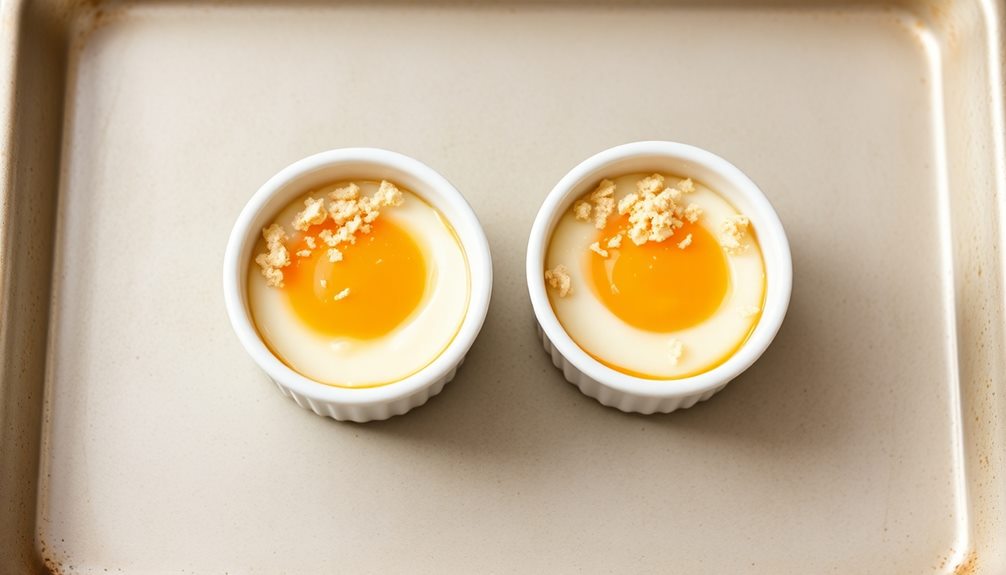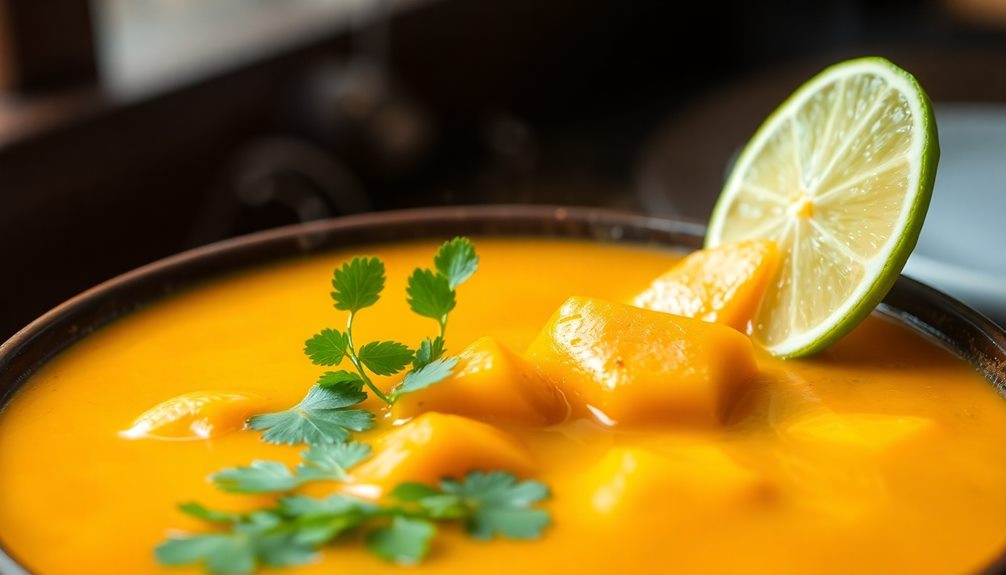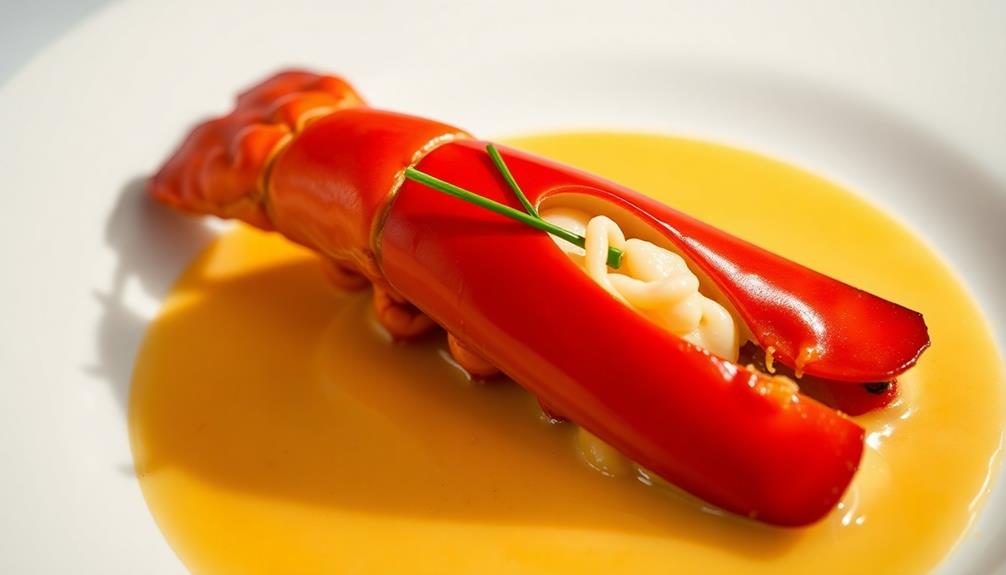Oeuf en cocotte, a delightful French baked egg dish, has captivated culinary enthusiasts for centuries. Its humble peasant origins evolved into a refined dish enjoyed by the upper classes. The name comes from the small ramekin used for baking, which gives the eggs a soft, custard-like texture through slow cooking. Today, it remains a classic in French cuisine, often served at brunch or light meals. To make it, you'll preheat your oven, crack fresh eggs into greased ramekins, add cream or milk, and bake until the whites are set but the yolks are still runny. Top it off with fresh herbs for a truly elegant presentation. It's a simple yet delicious way to experience the versatility of eggs – and there's more where that came from!
Key Takeaways
- Oeuf en Cocotte is a classic French baked egg dish with a soft, custard-like texture, originating from the 17th century and enjoyed by all classes.
- The dish is prepared by cracking fresh eggs into small ramekins, adding fillings, and baking in a 375°F oven until the whites are set while the yolks remain runny.
- The ramekins are lightly greased to facilitate easy release, and the eggs can be enhanced with ingredients like cream, milk, cheese, or sautéed mushrooms.
- Once baked, the eggs are garnished with fresh herbs, such as parsley or chives, and can be seasoned with flaky sea salt and black pepper for added flavor.
- Oeuf en Cocotte is a versatile dish suitable for breakfast, lunch, or dinner, making it an ideal option for brunch or quick meals.
History
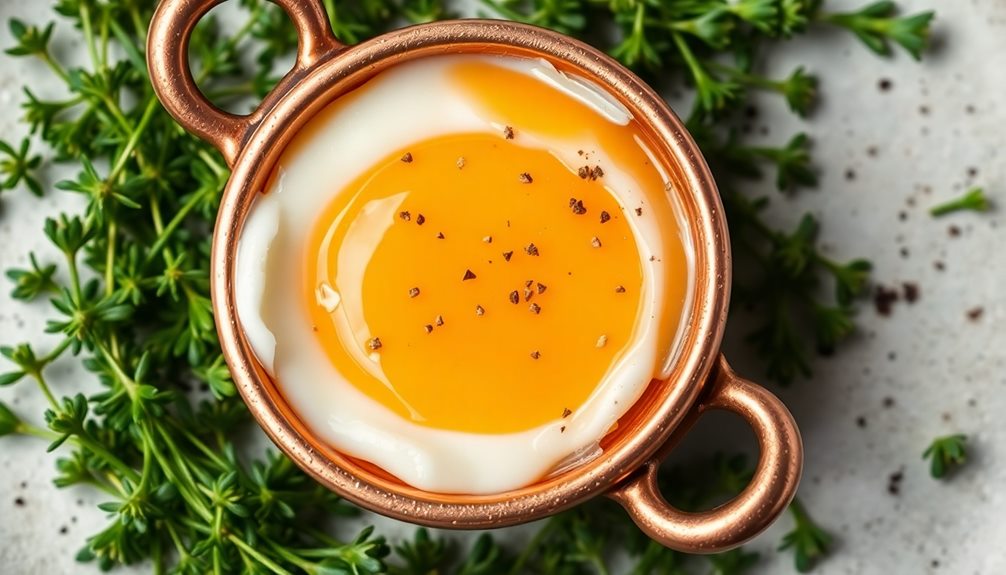
Though the origins of oeuf en cocotte aren't entirely clear, this classic French baked egg dish has been enjoyed for centuries. It's believed to have roots in the 17th century when simple egg dishes were popular among French peasants.
Over time, oeuf en cocotte evolved, becoming a more refined and elegant creation enjoyed by the upper classes.
The name "oeuf en cocotte" comes from the French word "cocotte," which refers to the small ramekin or dish used to bake the eggs. These individual-sized vessels allow the eggs to cook slowly, creating a soft, custard-like texture.
The dish's simplicity is part of its charm, with just a few high-quality ingredients needed to make it shine.
Today, oeuf en cocotte remains a beloved classic in French cuisine, often served as a fancy brunch or light meal. Its timeless appeal and ease of preparation have made it a staple in many home kitchens and fine dining establishments across the country.
Cooking Steps

To begin the cooking process, preheat your oven to 375°F (190°C).
Grab a small oven-safe ramekin or dish and lightly grease it with a dab of butter or non-stick cooking spray.
Crack two fresh eggs directly into the ramekin, being careful not to break the yolks.
Next, add a spoonful of your favorite fillings. Try sautéed mushrooms, crumbled bacon, or a sprinkle of grated cheese.
For a simple yet delicious option, you can't go wrong with a pinch of salt and pepper.
Gently transfer the ramekin to the preheated oven and bake for 12 to 15 minutes, until the whites are set but the yolks are still slightly runny.
Once the oeuf en cocotte is ready, carefully remove it from the oven.
Serve immediately, perhaps with a slice of crusty bread for dipping in the creamy yolk.
Enjoy this classic French delight in the comfort of your own kitchen!
Step 1. Preheat Oven to 375°F
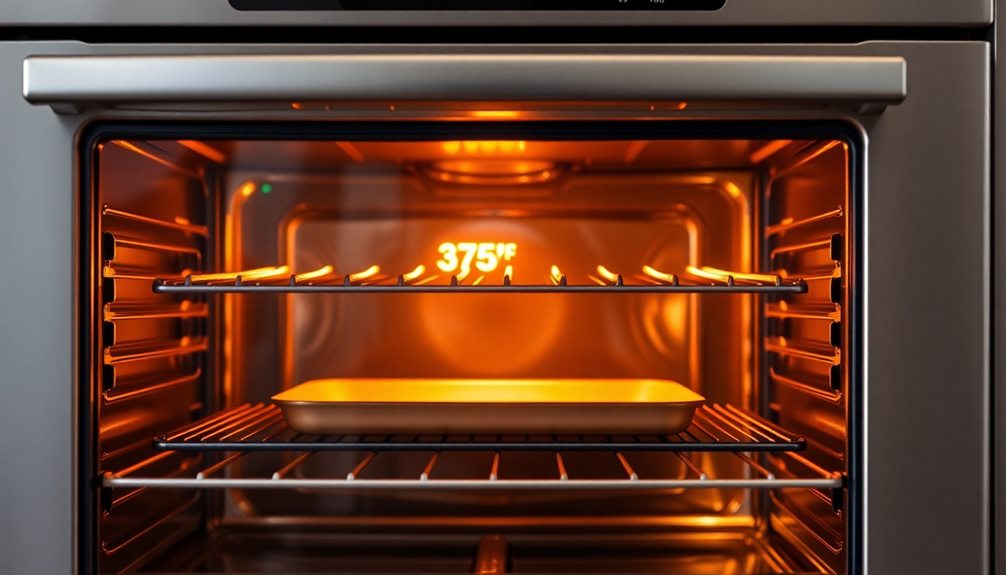
Preheat your oven to 375°F. This is a crucial first step in making the delightful Oeuf en Cocotte. By heating your oven to the right temperature, you'll ensure your eggs bake to perfection.
Once the oven is preheated, you'll need to gather your ramekins or small baking dishes. These will hold the eggs during the baking process. Lightly grease the insides of the ramekins with a bit of butter or non-stick cooking spray. This will help the eggs release easily when they're done.
With your oven and dishes ready, you're one step closer to enjoying this classic French dish. The high heat of the oven will gently cook the eggs, creating a soft, creamy texture you'll love.
Just be sure to keep a close eye on them, as you want the yolks to remain runny and delectable. Soon, you'll have a wonderfully simple yet elegant meal ready to savor.
Step 2. Crack Eggs Into Ramekins
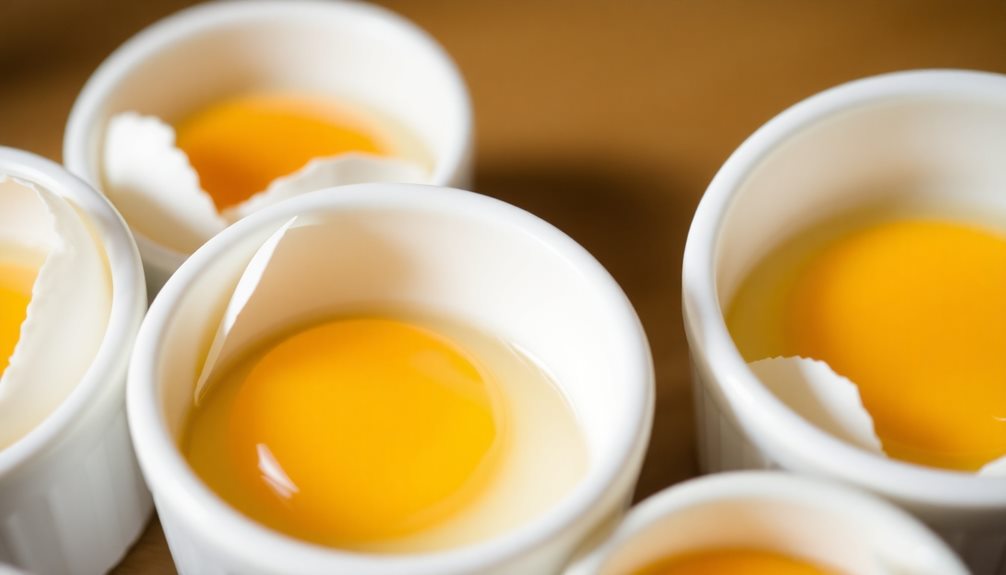
Carefully crack 2 eggs into each prepared ramekin. Be gentle as you crack the shells, making sure not to let any stray bits of shell fall into the ramekins. Gently pour each egg into its own cozy little dish.
Try to keep the yolks intact – you want those rich, golden centers to remain whole and proud. Once all the eggs are nestled in their ramekins, take a moment to admire your handiwork. These little egg cups are the start of something truly delicious!
Next, you'll add a few simple ingredients to each ramekin, like a dollop of cream or some grated cheese. But for now, relish the sight of those perfect, unbroken yolks waiting to be baked to golden, custardy perfection.
With the eggs cracked and the ramekins ready, you're well on your way to creating a classic French Oeuf en Cocotte – a dish that's sure to impress your guests (or just yourself!).
Step 3. Add Cream or Milk
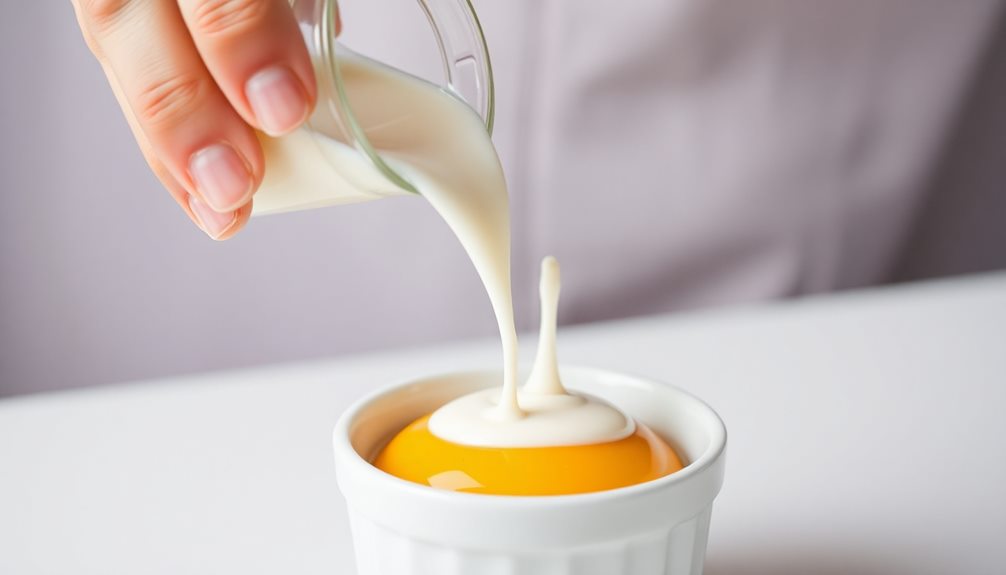
Next, add a small dollop of heavy cream or a drizzle of whole milk to each ramekin. This extra liquid will help the eggs cook to a soft, creamy consistency.
Don't be shy – you want enough cream or milk to create a little pool at the bottom of the ramekin. The eggs will bake right in this delightful dairy bath, soaking up all that rich flavor.
Once you've added the cream or milk, use a spoon to gently swirl it around the ramekin, making sure it reaches all the edges. This will help the eggs cook evenly.
If you want, you can even crack a bit of black pepper over the top for a touch of spice.
Now your ramekins are ready for the oven! The cream or milk will create a wonderful, velvety texture as the eggs bake to perfection.
Get ready for a truly decadent French-inspired breakfast or brunch.
Step 4. Bake Until Whites Are Set

Pop the ramekins into a preheated 350°F oven and bake for 12-15 minutes, or until the egg whites are fully set but the yolks remain soft and runny. This is the key to achieving that perfect oozy, golden center that makes oeuf en cocotte so irresistible.
Keep a close eye on the eggs as they bake – you don't want to overcook them! The whites should look opaque and firm, while the yolks are still delightfully gooey.
Once they're done, you can add any finishing touches, like a sprinkle of fresh herbs or a drizzle of truffle oil. Just be careful when removing the hot ramekins from the oven – use oven mitts to avoid burning your fingers.
Serve the oeuf en cocotte immediately, so you can savor that first heavenly bite. The combination of the silky smooth yolk and the pillowy soft whites is simply divine.
Get ready to fall in love with this classic French dish!
Step 5. Garnish With Fresh Herbs
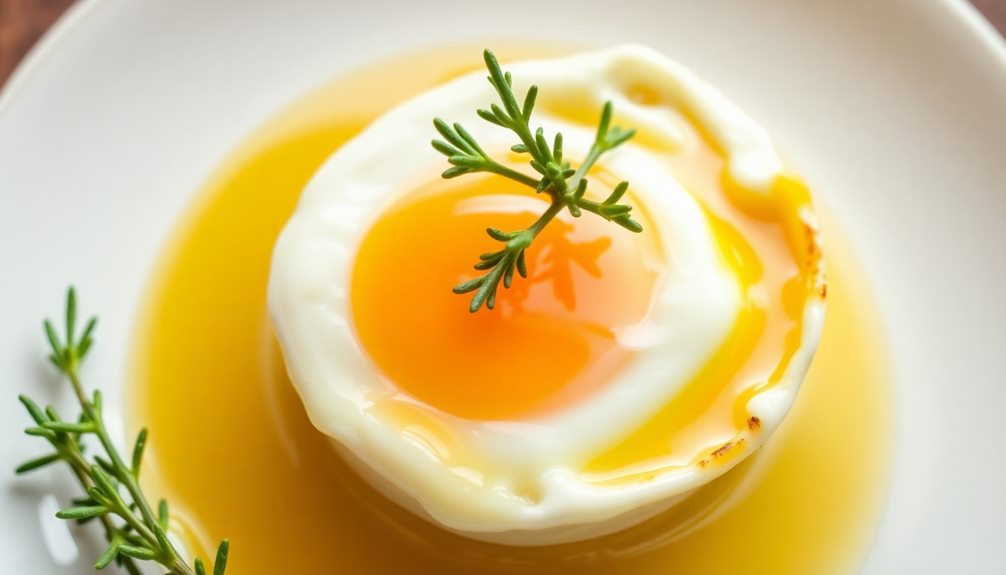
Garnishing the baked oeuf en cocotte with fresh herbs elevates the dish, imparting vibrant flavors and a touch of elegance. Opt for delicate herbs like parsley, chives, or tarragon. Their fresh, verdant notes will complement the rich, creamy eggs perfectly.
Simply snip the herbs with scissors or tear them gently with your fingers, then sprinkle them over the top of the cooked eggs. The fragrant herbs will release their aroma, tantalizing your senses as soon as the dish comes out of the oven.
For an extra special touch, you can also drizzle a bit of fragrant truffle oil over the top. The earthy, umami notes of the truffle oil will add depth and complexity to the dish.
Alternatively, a sprinkle of flaky sea salt and a grinding of black pepper can also enhance the flavors.
Garnishing your oeuf en cocotte with fresh herbs is the final step in creating a truly impressive and delicious French-inspired breakfast or brunch.
Final Thoughts
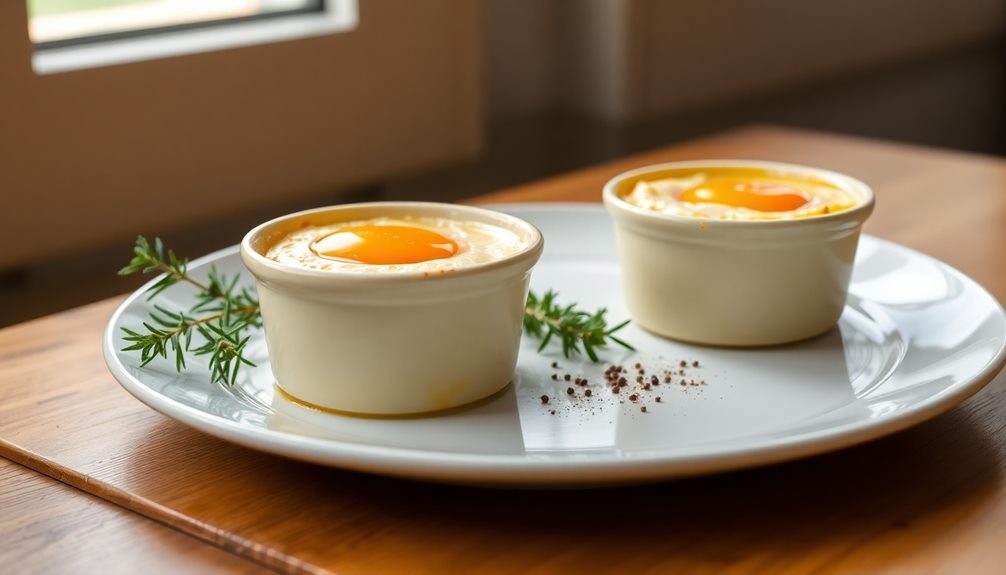
The Oeuf en Cocotte is a delightful French baked egg dish that showcases the versatility of the humble egg.
It's a simple yet elegant dish that can be enjoyed for breakfast, lunch, or even dinner. The best part? It's incredibly easy to prepare, making it the perfect option for a cozy weekend brunch or a quick weeknight meal.
Once you've mastered the basic technique, the possibilities are endless. You can experiment with different flavor combinations, from savory to sweet, to create a truly personalized dish.
Whether you prefer a classic Gruyère cheese and ham filling or something more adventurous like smoked salmon and dill, the Oeuf en Cocotte is sure to become a new favorite in your culinary repertoire.
Frequently Asked Questions
Can I Use Other Types of Cheese Besides Gruyère?
Absolutely! You can use a variety of cheeses in your baked egg dish. Try cheddar, parmesan, or even a blend of your favorite cheeses. The key is to choose ones that melt well and complement the egg's flavor.
How Long Can I Store Leftover Oeuf En Cocotte?
You can store leftover oeuf en cocotte in the refrigerator for up to 3 days. Keep it in an airtight container, and when you're ready to reheat, gently warm it up in the oven or on the stovetop until heated through.
Can I Substitute Milk for the Cream in the Recipe?
You can substitute milk for the cream, but the texture and richness won't be quite the same. The dish may turn out a bit thinner and less creamy. However, it can still work if you prefer a lighter version.
Is It Possible to Make Oeuf En Cocotte in Advance?
Yes, you can prepare oeuf en cocotte in advance. Simply assemble the ingredients in the ramekins, cover, and refrigerate until ready to bake. Just be sure to adjust the baking time as the chilled ramekins may require a few extra minutes in the oven.
Can I Add Additional Ingredients to the Dish?
Absolutely! You can easily add extra ingredients to customize your oeuf en cocotte. Try mixing in cheese, herbs, or veggies for a more robust flavor. Just be sure not to overstuff the ramekins. Get creative and enjoy your personalized baked egg dish!
